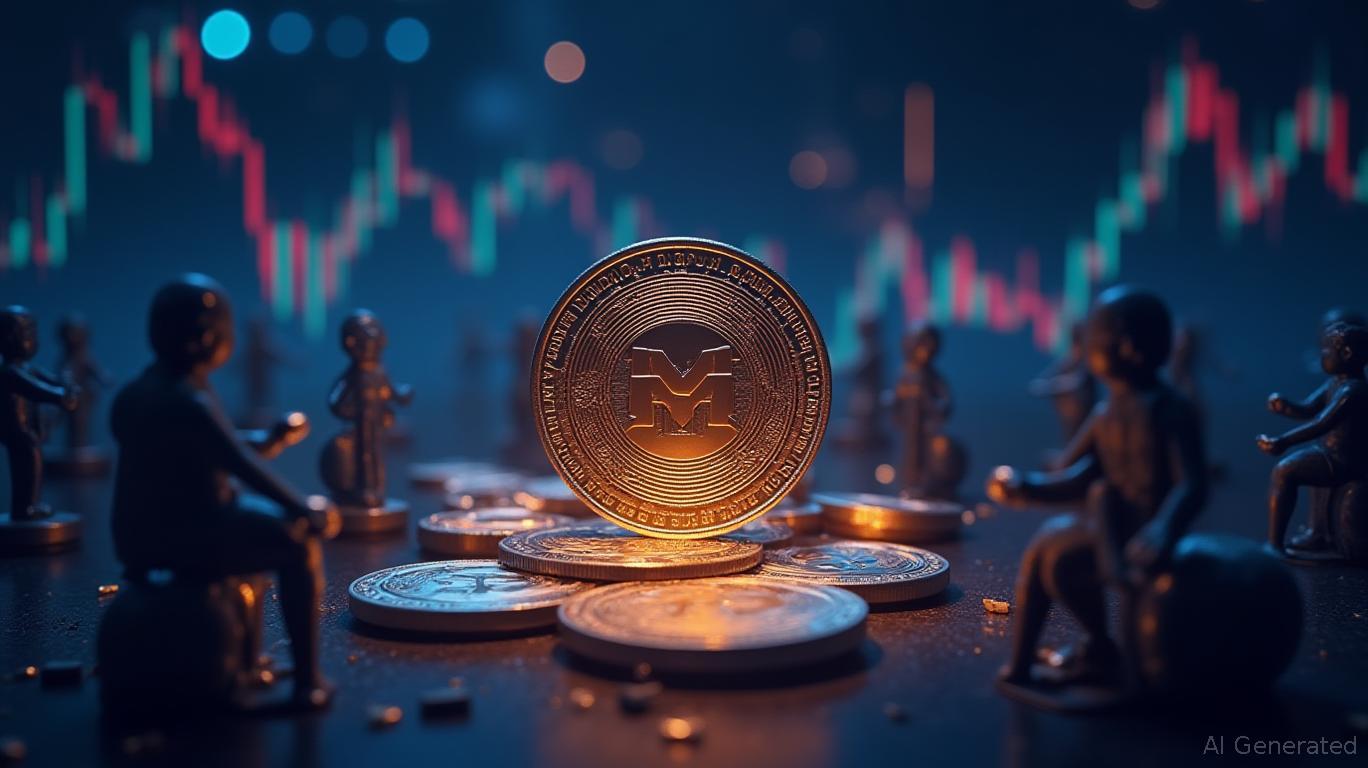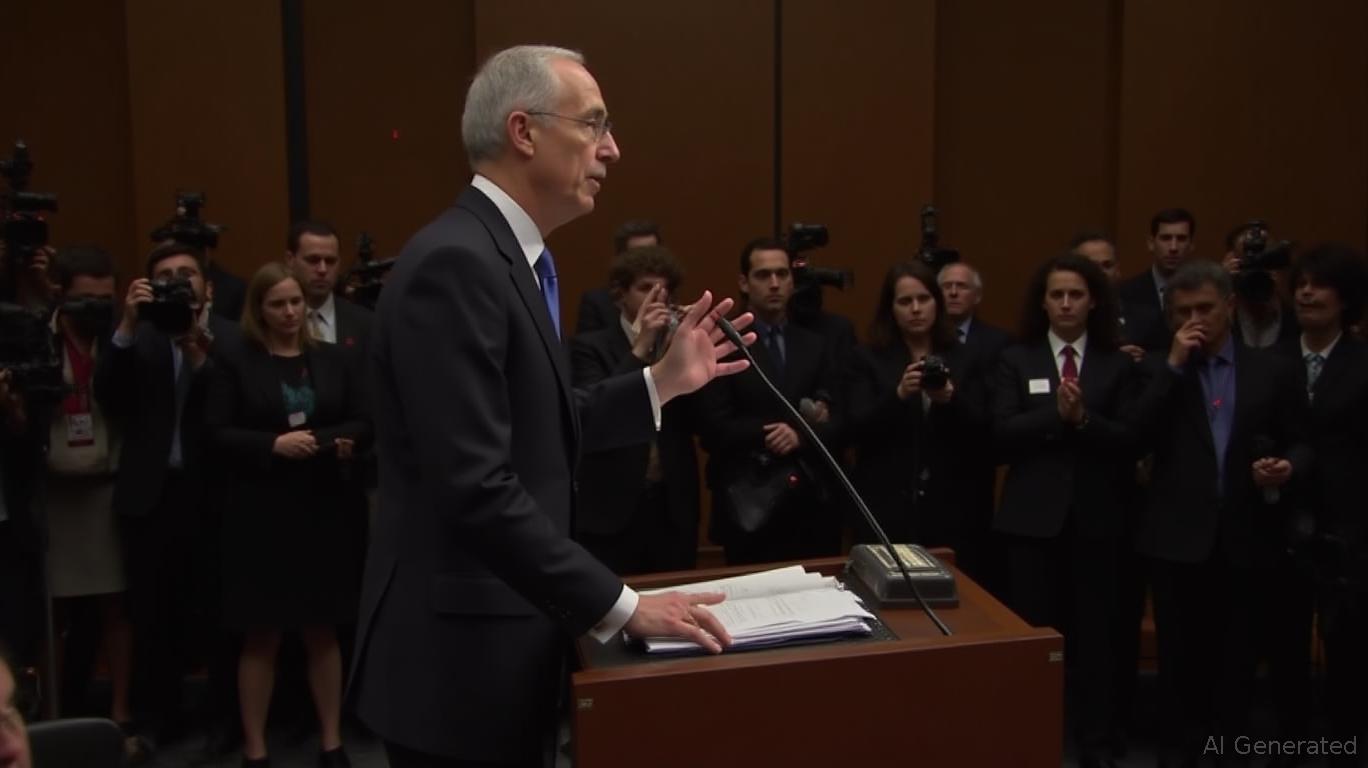Bitcoin News Update: Institutional Investors Surpass Miners, Intensifying Supply and Demand Pressures
- Public companies and institutional investors are buying Bitcoin faster than its daily supply, creating supply-demand imbalances. - Corporate holdings now exceed 4% of total supply, surpassing ETFs, as firms use BTC for inflation hedging and diversification. - Sustained institutional buying could drive Bitcoin toward $200,000 by year-end, but critics warn macroeconomic factors and regulatory risks remain critical variables. - Ethereum's institutional adoption remains fragmented, with major players control
Publicly traded firms and large investors are ramping up their
This pattern highlights a significant shift in how institutions are engaging with crypto. Publicly listed companies now possess close to 4% of all Bitcoin in circulation, overtaking the 3.6% held by Bitcoin-centric ETFs, as more corporate treasuries turn to BTC as both an inflation hedge and a portfolio diversifier, according to
Ethereum, on the other hand, is experiencing a different trend. While
The swift uptake of Bitcoin by corporations has created a gap between available supply and rising demand. With mining production constrained by energy expenses and regulatory hurdles, some analysts caution that continued institutional accumulation could further tighten supply and push Bitcoin prices higher. "We’re seeing a fundamental change as companies begin to treat Bitcoin as a core asset," said Noah Roy of Ryze Labs, adding that this demand could exceed Bitcoin’s scheduled issuance rate.
However, skeptics urge caution. Blockchain analytics provider Artemis points out that while corporate treasuries have withdrawn $800 billion from alternative coins, Bitcoin’s dominance is also shaped by broader economic forces, such as risk aversion and global tensions. Moreover, ETFs still account for 6.8% of the total Bitcoin supply—a larger share than corporate holdings—though their expansion has slowed compared to direct corporate buying.
The broader market impact remains unclear. Some analysts believe the current wave of buying could result in a “supply shock” if mining output fails to keep pace with institutional appetite, potentially driving Bitcoin toward $200,000 by the end of the year, as forecast by Standard Chartered’s Geoff Kendrick. Others, however, reference the October 2025 crash as a warning, stressing that regulatory developments and macroeconomic stability will ultimately shape Bitcoin’s future.
As both corporations and ETFs continue to transform the crypto market, competition for Bitcoin’s finite supply is heating up. With major players like BGIN Blockchain Limited set to introduce next-generation Bitcoin mining equipment in early 2026, according to
---
Disclaimer: The content of this article solely reflects the author's opinion and does not represent the platform in any capacity. This article is not intended to serve as a reference for making investment decisions.
You may also like
Ethereum News Today: As ETH Remains Static, MUTM’s DeFi Approach Draws in $17.8M and 17,000 Investors
- Mutuum Finance (MUTM) raised $17.75M in Phase 6 presale at $0.035, attracting 17,370+ holders. - Analysts project $0.21 price target by mid-2026 driven by dual-lending model and Q4 2025 testnet launch. - Project features 24-hour leaderboards, $50K bug bounties, and CertiK audit (90/100) to build trust. - MUTM's structured ROI (420% potential) and utility-driven growth outpace Cardano/ETH's speculative models.

U.S.-Supported Thailand-Cambodia Accord: A Strategic Geopolitical Maneuver for Stability in Southeast Asia
- Thailand and Cambodia near historic peace deal, backed by U.S., to end border clashes with weapon withdrawals and joint de-mining. - U.S. involvement highlights regional influence amid China’s growing presence, with Trump set to witness the October 25 signing. - Thailand unveils $150M tourism stimulus to boost domestic travel, balancing fiscal prudence with growth targets. - China-U.S. trade talks in Malaysia aim to ease tensions over tariffs, with both sides addressing trade barriers and rare-earth expo

BAT rises 1.26% as short-term profits counteract overall declines
- BAT surged 1.26% in 24 hours to $0.1683, contrasting a 27.66% annual decline despite 20.54% monthly gains. - Short-term momentum reflects improved risk appetite and easing crypto bearishness, though long-term fundamentals remain weak. - A proposed EMA crossover strategy aims to validate trends using 50/200-day indicators amid volatile price action. - Backtesting over 12 months with $10k investment seeks to manage risk through -10% stop-loss and +20% take-profit thresholds.
U.S. and China Hold Trade Negotiations in Kuala Lumpur to Prevent Escalation and Extend Ceasefire
- U.S.-China high-level trade talks resumed in Kuala Lumpur, 2025, aiming to avert a trade war ahead of potential Trump-Xi APEC summit discussions. - Negotiations focused on agricultural trade (U.S. soybean imports to China dropped to zero in September 2025), rare earth export controls, and semiconductor tariffs. - Malaysia's neutral role highlighted its diplomatic influence, with U.S. officials acknowledging its strategic value in stabilizing trade ties amid unresolved issues like Hong Kong's Jimmy Lai de
